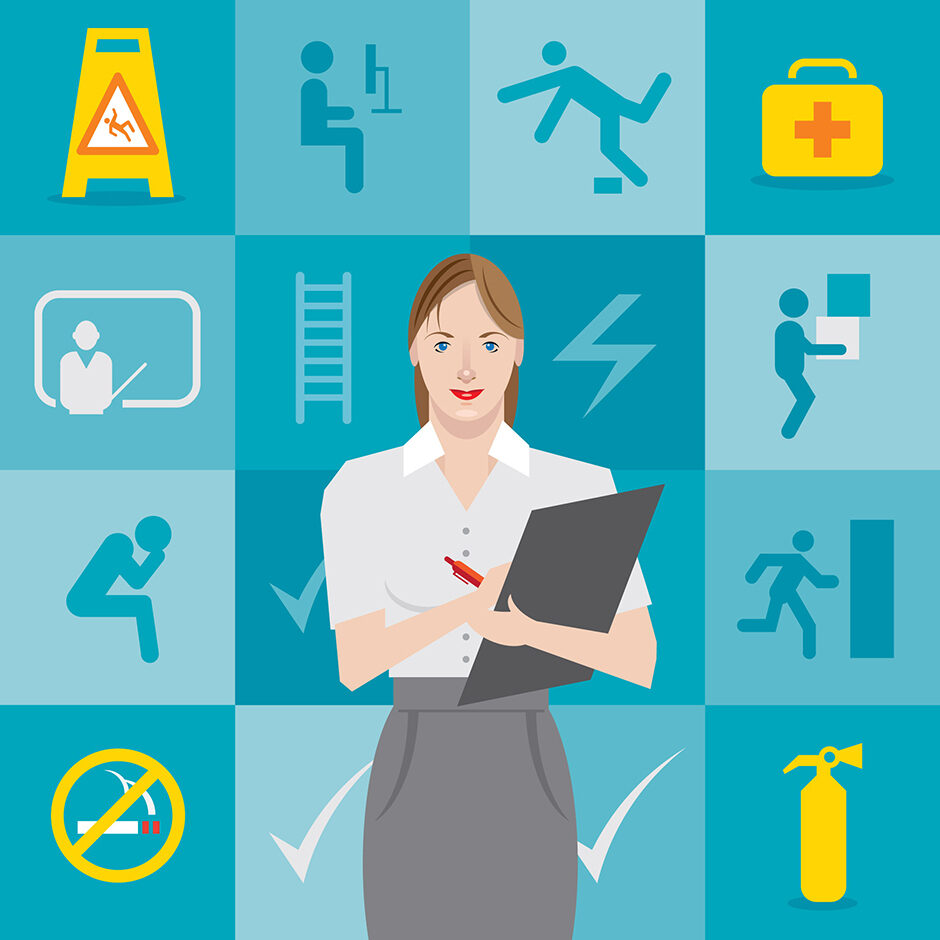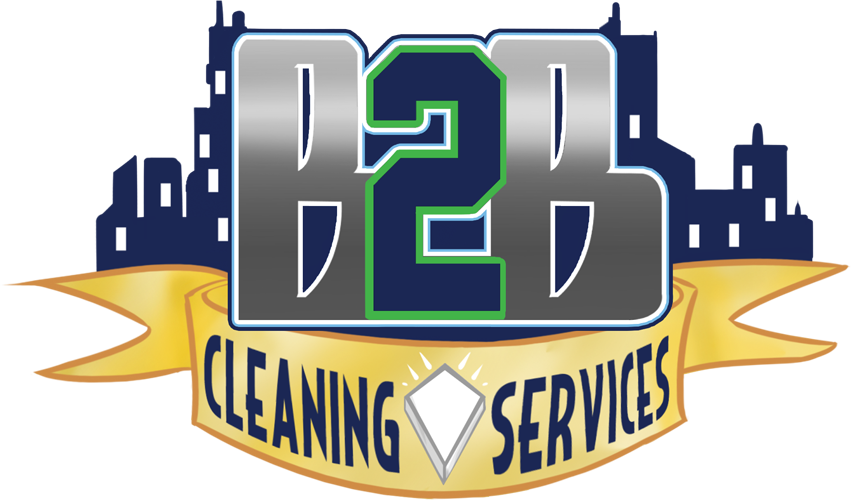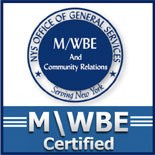No workplace is ever completely free of hazards, and an office is no exception.
The hazards may not be as obvious as they are on an industrial shop floor, but people can suffer serious injuries in an office environment.
The Occupational Safety and Health Administration (OSHA) has no single rule specific to office safety, but several regulations do apply. This article will highlight some of the common hazards.

1. Introduce the need to be prepared for emergencies
Being ready to handle an emergency is perhaps the most important part of an office safety program. When there’s a fire, severe weather, or some other emergency, you can rely on the written emergency action plan (EAP) to give you the instructions you need to stay safe.
Everyone in the office should know:
- How to report fires, injuries, chemical spills, and other emergencies
- How to recognize alarms and other warning signals
- The evacuation route
- Where to assemble after an evacuation
- Where to take shelter from a storm
- Who to ask for more information
2. Review your policies for using fire extinguishers
If everyone is to follow an EAP to evacuate in case of a fire, there’s no need for anyone to learn how to use fire extinguishers. Just because there’s a fire extinguisher in the office doesn’t mean you’re supposed to use it.
However, if some employees have been designated to use fire extinguishers, these employees must be provided with hands-on training in the use of the equipment. Even trained employees have to take precautions. Never try to fight a fire if:
- A fire extinguisher isn’t readily accessible
- You aren’t sure if the extinguisher is the right type for the fire
- You aren’t sure how to use the extinguisher
- The fire is already smoky, hot, or spreading rapidly
- Your escape path is threatened or blocked
3. Emphasize the importance of reporting injuries and getting first aid and medical attention
Office workers may not have the same risk for serious injuries as factory workers do, but injuries can still occur. Report any injury right away. No injury is too minor to report.
When there’s no nearby hospital, clinic, or infirmary that can be used to treat injured employees, the employer must train persons to render first aid.
In many offices, however, the policy is to call for emergency responders (such as paramedics or EMTs) or to go to a nearby clinic in case of an injury.
4. Describe the hazards of bloodborne pathogens
There’s often blood involved with an injury. Blood can carry infectious microbes such as hepatitis B virus (HBV) and human immunodeficiency virus (HIV). OSHA’s bloodborne pathogens standard applies to all “occupational exposures” to blood or other potentially infectious materials. Employees who are designated by the employer to provide first aid (or to clean up equipment and surfaces contaminated with blood) are covered by the standard.
These employees use “universal precautions,” an approach to infection control where all human blood and certain body fluids are treated as if they were known to be infectious for bloodborne pathogens. Responders wearing rubber gloves and protective clothing is part of following such precautions.
5. Discuss slip, trip, and fall hazards
Slips, trips, and falls are some of the most common causes for serious office injuries. To avoid injuries:
- Keep floors dry. Wipe up spills right away, and mop up tracked-in rain or slush at doorways.
- Wear shoes with non-slip soles. Low heels provide more stability for walking than high heels do.
- Walk carefully. Don’t run if you’re in a hurry.
- Always watch where you’re going. Never carry materials that you can’t see over.
- Keep areas will lit. Report burnt-out lights.
- Keep aisles, stairs, and work areas clean and free of clutter. Store materials properly.
- Keep file cabinet drawers closed.
- Arrange furniture so no one will walk into sharp corners. Keep clear access to aisles and exits.
- Don’t let electrical cords be tripping hazards. Tape them down securely if they must temporarily be run where people walk.
- Report loose or damaged stair treads, handrails, or carpeting.
- Don’t lean back in your chair or put your feet up. These actions can cause the chair to slide out from under you.
- Always use a proper stepladder to reach materials on high shelves. Check the condition of the ladder before you use it. Stay off the top step, and don’t lean too far over to the side.
6. Describe safe-lifting procedures
Office workers aren’t immune from having to do manual lifting occasionally. Improper lifting is a common cause of injury. Try to use a cart or dolly to move items when you can. Get help to move heavy materials. When you need to manually lift materials:
- Plan the lift. Know the object’s weight. Have a clear path and clear place to set the object down.
- Position yourself squarely in front of the object.
- Bend your knees and keep your back straight.
- Get a full, firm grip with the object held close to your body.
- Straighten your knees to lift the object. Keep your back straight.
- Don’t twist your back as you carry the object.
- Set down the load by bending your knees to lower it into position.
7. Explain electrical safety concerns
In an office, properly installed electrical equipment is guarded, or covered and insulated. Misuse and defective equipment can cause shocks and burns. To avoid electrical hazards:
- Inspect portable electrical equipment before use. Look for defects such as loose parts, damaged or missing prongs on the plug, damaged insulation around the cord, and exposed bare wires. Remove damaged equipment from service. Repairs can only be made by qualified persons.
- Don’t handle cords, plugs, or equipment with wet hands.
- Keep cords clean and free from kinks.
- Don’t raise or lower equipment by its cord.
- Don’t pull on the cord to unplug equipment.
- Don’t use staples to secure cords in place. This can damage the cord’s outer insulation.
- Don’t use circuit breakers, fuses, or safety switches to repeatedly energize equipment; use the equipment’s control switches that are designed for regular use. If a circuit breaker trips repeatedly, report that there may be a problem with the circuit.
8. Discuss chemical hazards
There may be chemical hazards in an office. Cleaning products, inks, adhesives, etc., may be flammable or reactive. Using chemicals may lead to unhealthy exposures. OSHA’s hazard communication standard has requirements for container labels and safety data sheets (SDSs).
In an office, however, you may only be exposed to chemicals when you use various types of consumer products such as correction fluid or a cleaner for a dry erase board. OSHA’s standard doesn’t apply if you’re using a consumer product as it’s intended to be used by a consumer.
9. Emphasize the importance of reporting hazards
Hazards can only be addressed if they’re identified. If you notice a hazardous situation, report it right away. Be especially vigilant for hazards when you change equipment, materials, or procedures. Changes can introduce hazards.


